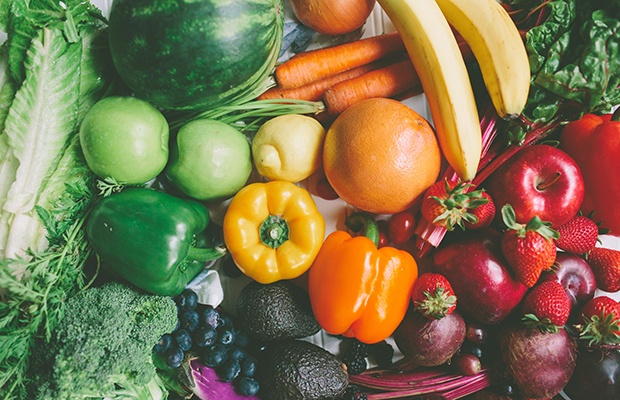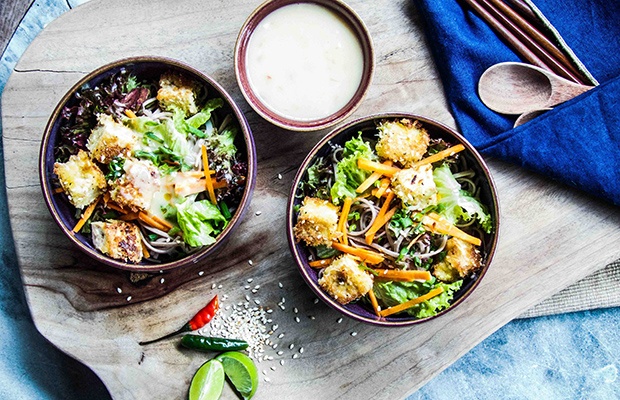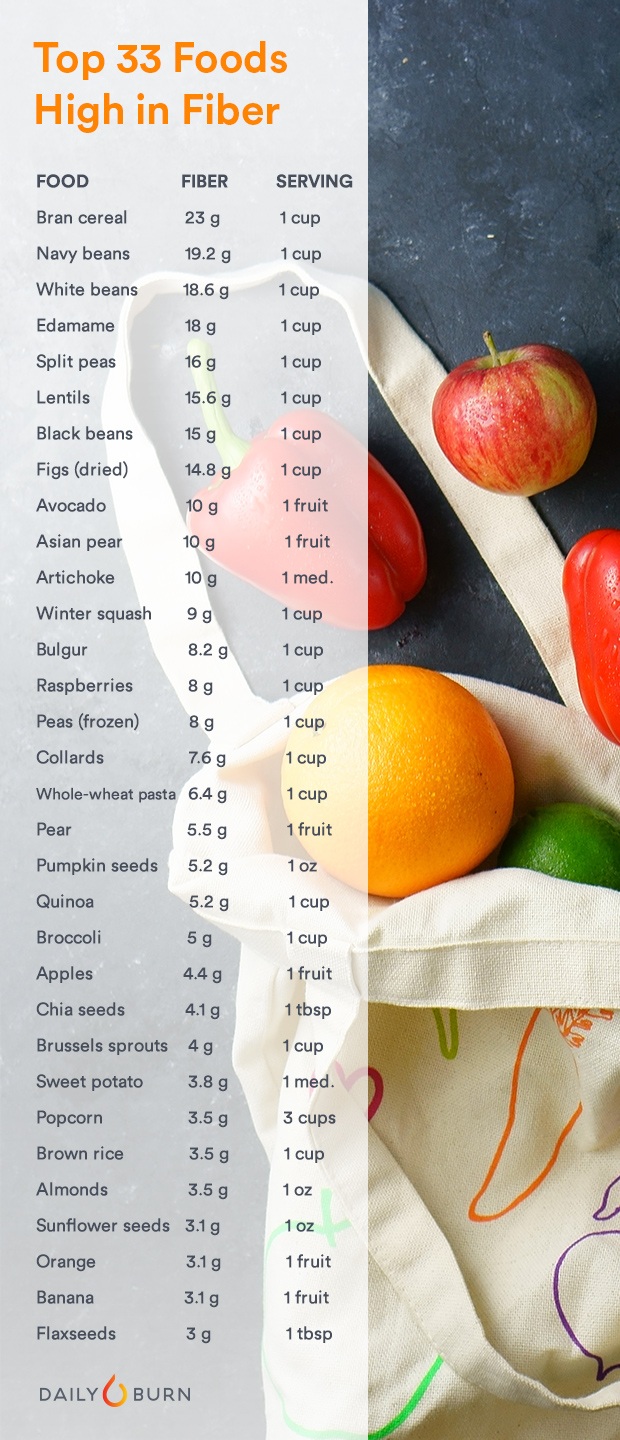The Advantages of Embracing a High-Fiber Diet and its Best Food Sources

Photo: Twenty20
There is no debate about the benefits of a high-fiber diet. While many diets have their trade-offs, a high-fiber diet stands out as exceptionally positive, presenting no reservations or stipulations. Fiber offers numerous health advantages.
Dr. Robert Graham, a board-certified integrative-medicine doctor and co-founder of FRESH Med, explains, “Research has shown that diets low in fat and high in fiber reduce the risk of heart disease, diabetes, irritable bowel syndrome, and even some cancers. So start eating your fiber!”
Let’s delve into the world of fiber and discover the best food sources to enrich your diet.
RELATED: Are You Getting Enough Fiber?
Table of Contents
Understanding Fiber: Soluble vs. Insoluble
Dietary fiber, found in plant-based foods like fruits, vegetables, beans, and whole grains, is the indigestible part that aids digestion and waste management. This essential nutrient falls under the carbohydrate category, but unlike most carbs that convert to sugar, dietary fiber remains unchanged as it moves through the body.
“Fiber is like a sponge, so without water, it won’t work.”
Fiber comes in two forms: soluble and insoluble. Soluble fiber derives from the plant’s cell structures. Upon reaching the digestive tract, it mixes with water to form a gel, which binds to fatty acids, thereby slowing digestion and the rate of sugar absorption. This helps stabilize blood sugar and reduce cholesterol, ultimately lowering the risk of heart disease.
RELATED: Why Young People Need to Worry About Cholesterol, Too
In contrast, insoluble fiber comes from the tough, structural part of plants, such as bran, seed husks, and fruit and vegetable skins. This type of fiber moves through the digestive system largely intact, adding bulk to stools and acting as an intestinal broom, sweeping waste through the colon.
While both types of fiber are essential, neither can function effectively without adequate hydration. Dr. Graham explains, “Fiber is like a sponge, so even an adequate amount of fiber won’t work without enough water.”
RELATED: How to Detox the Healthy Way: 16 Recipes You’ll Love
The Health Benefits of a High-Fiber Diet
Besides regulating bowel functions, a high-fiber diet is associated with a decreased risk of heart disease and breast cancer. Fiber also aids weight management as it provides a sense of fullness without extra calories (insoluble fiber has no calories). Some studies even suggest a link between a high-fiber diet and reduced and less severe food allergies. If you suffer from digestive issues like constipation or an upset stomach, increasing your fiber intake may be the solution.
“When there isn’t enough fiber in the diet, bad bacteria can take over.”
Dr. Andrea Arikawa, a nutrition and dietetics professor at the University of North Florida, highlights the functionality of fiber in supporting the gastrointestinal system, a crucial contributor to boosting the immune system. She explains, “Once undigested fibers reach the large intestine, they serve as prebiotic fuel for the friendly bacteria living there. When there isn’t enough fiber in the diet, there will be a shift in the microbiome to favor the growth of bacteria that can survive on fat and protein (aka the bad guys).”
Arikawa further expounds that gut microorganisms produce compounds that circulate throughout the body. An overgrowth of bad bacteria can generate inflammatory compounds or compounds causing plaque buildup in the veins, thereby implicating a lack of fiber in cardiovascular disease, diabetes, and obesity. It’s evident that the benefits of fiber extend beyond gut health.
RELATED: The 11 Best and Worst Foods for Your Gut
Are You Getting Enough Fiber?
The recommended daily fiber intake is 25 grams for women and 38 grams for men. However, it’s crucial to note that these figures represent the minimum requirement. “That is where we should be starting,” Dr. Graham emphasizes. “A high-fiber diet is considered to be anything over that minimum.”
Alarmingly, Americans currently consume only about 16 grams of fiber per day. Given that fiber is essential for healthy bowels and regularity, Dr. Graham notes, “We’re a fiber-deficient society, which means we’re a constipated society.”
On the contrary, overconsumption is also possible. Dr. Arikawa asserts that exceeding the maximum tolerable amount (40 to 50 grams for most people) may result in gas, bloating, cramping, and ironically, constipation. She advises gradually increasing fiber intake and consuming ample fluids alongside it. Low-carb diets, such as the ketogenic diet, pose a higher risk of fiber deficiency due to the reduced consumption of grains and fruits. Dr. Graham suggests focusing on low-carb, plant-based foods while following such diets to ensure adequate fiber and fat intake. For instance, avocados are a suitable option as they fulfill both high-fiber and high-fat dietary requirements.
RELATED: 8 Low-Calorie Foods That Will Actually Fill You Up

Photo: Twenty20
Fiber Supplements: Are They Beneficial or Superfluous?
Can fiber supplements be used to enhance fiber intake? The answer is both yes and no. While fiber pills and powders can help bridge the gap, they shouldn’t serve as a primary substitute for natural fiber-rich foods. Dr. Graham advises that fiber supplements should only complement a well-balanced diet. He emphasizes, “The whole is greater than the sum of its parts, and these products don’t provide the vitamins, minerals, and micronutrients that fibrous foods contain.”
When resorting to supplements to address deficiencies, it’s important to be cautious of synthetic sources of fiber, such as methylcellulose, calcium polycarbophil, and wheat dextrin. Dr. Graham cautions, “They’re chemicals, and we’re not robots. We’re humans and we need to process food.” He recommends opting for food-based supplements like psyllium and inulin, the latter being a prebiotic as well.
Dr. Arikawa advises against fixating on differentiating between the two types of fiber and instead focuses on overall fiber intake. It’s important to remember that whole foods, which mostly contain both types of fiber, remain the best sources of fiber.
RELATED: The Truth About the New Probiotics Trend
Top Foods High in Fiber

Photo: Twenty20
Read More
9 All-Natural Sources of Probiotics
30-Minute Meals for Quick, Healthy Dinner Ideas
Everything You Need to Know About the Top Diet Plans



